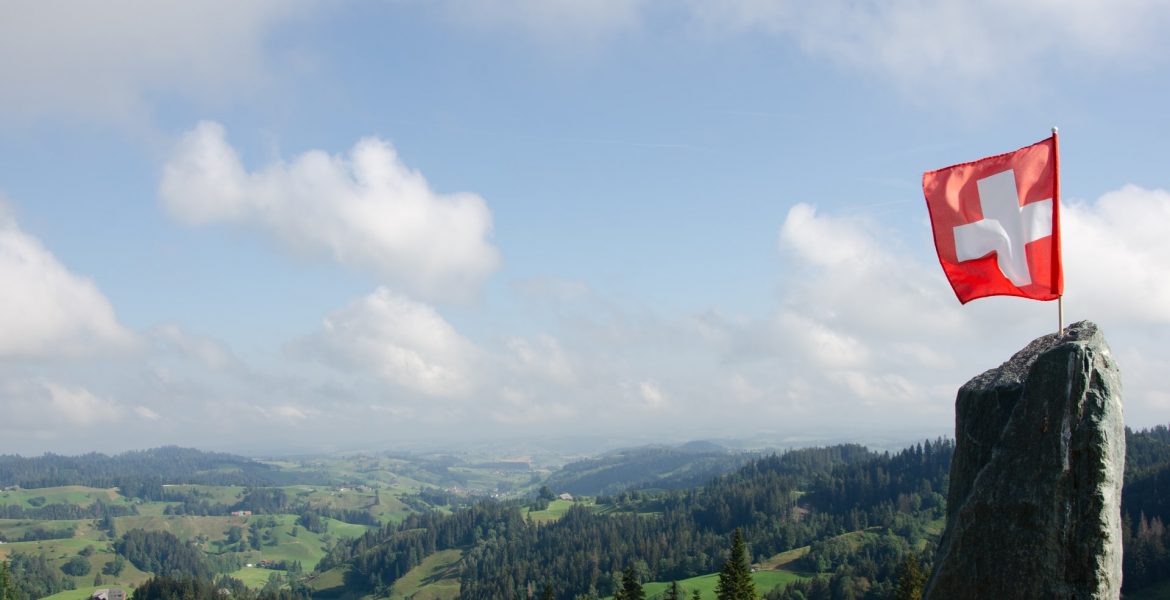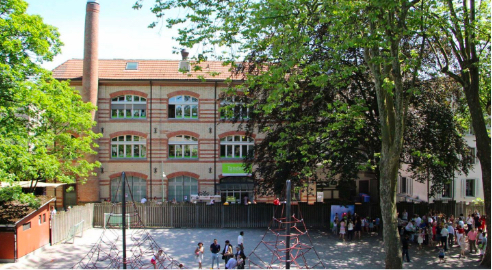We are social creatures, and as such, we tend to identify with different groups to feel connected to society. Some groups can be less important, such as people who like ketchup on the side versus those who put it on top of fries. However, some others, such as nationality, are rooted in the psychology of humankind. One common form of national attachment is the understanding of national symbols. So, if you want to feel closer to the Swiss people, you could start by understanding the symbols related to their history and culture.
National Flag
The current Swiss flag was officially set nationally in 1848. The primary colors are red and white, and a unique feature is its square shape. It is one of the two flags in the world to have this. The flag contains a white cross in the center with arms that have equal length but are one-sixth longer than they are broader.
Many historians believe that the Swiss flag originated from the 14th century during the Battle of Laupen. The Schwyz districts of the Old Swiss Confederacy used a white cross along their red banner to identify their troops during the war, and that is where the design comes from.
Switzerland is known for being a neutral country. They have not been part of any wars for 500 years. So, Switzerland and its flag became a symbol of peace. In addition, the flag also represents freedom for the Swiss people, loyalty, and honor.
National Anthem
The national anthem of Switzerland is The Swiss Psalm: Trittst im Morgenrot daher (When the morning skies grow red) by the composer Alberik Zwyssig and the lyricist Leonhard Widmer. Originally the melody of this anthem was used as a church hymn until 1841 when they combined it with Widmer’s lyrics.
In 1961, the Federal Council decided on temporarily using the Swiss Psalm as the national anthem on military and diplomatic occasions. Then, in 1981 it finally became the official national anthem.
The first Swiss national anthem was the 1811 Rufst du, mein Vaterland (When you call us, Fatherland), by Johann Rudolf Wyss merged with the melody of the British national anthem “God Save the Queen”.
National Coat of Arms
The Swiss coat of arms bears the same white-on-red cross as the national flag, with the slight difference being the heraldic shape instead of square.
The coat of arms is a symbol of power, and as such, it is a protected public sign. According to the Coat of Arms Protection Act, the use of this symbol is reserved for the Swiss Confederation.
National Currency
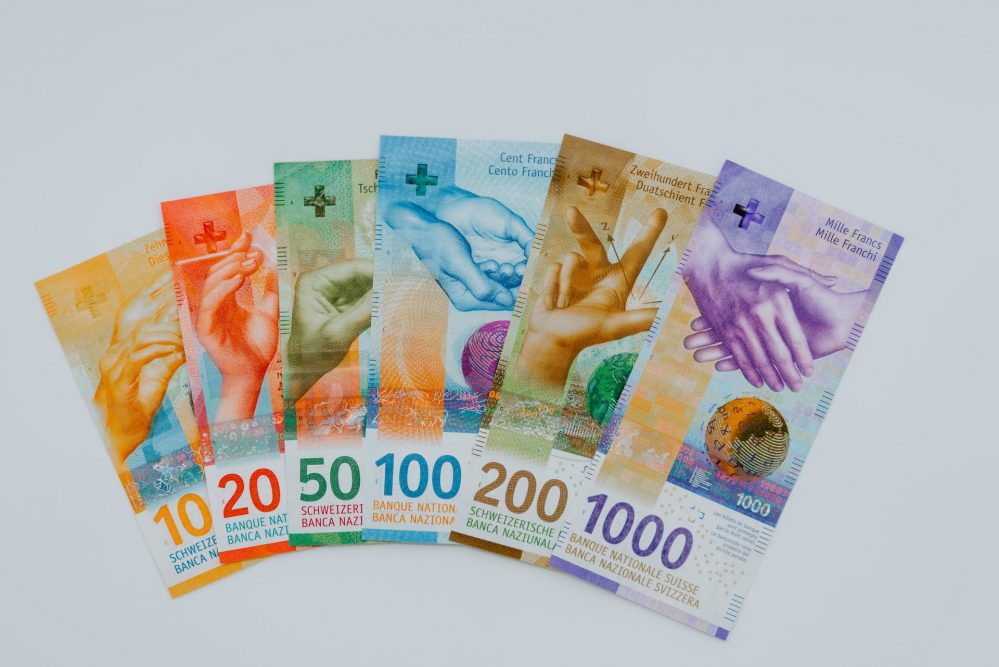 The official currency in Switzerland is the Swiss franc. The first franc banknotes were distributed in 1825 by the Caisse de dépôt of the city of Bern. The symbol and official currency code for the franc is “CHF”.
The official currency in Switzerland is the Swiss franc. The first franc banknotes were distributed in 1825 by the Caisse de dépôt of the city of Bern. The symbol and official currency code for the franc is “CHF”.
You can find franc notes as:
- 10 franc
- 20 franc
- 50 franc
- 100 franc
- 200 franc
- 1000 franc
On the other hand, the coins can be:
- 5 rappen (worth 0.05 francs)
- 10 rappen (worth 0.10 francs)
- 20 rappen (worth 0.20 francs)
- 50 rappen (worth 0.50 francs)
- 1 franc
- 2 francs
- 5 francs
Occasionally, you might find the currency written as the abbreviation “Fr” as well.
National Flower
 Leontopodium nivale, also known as the edelweiss flower, is regarded as the national flower in Switzerland. This plant has adapted to life in the mountains. That is why it is associated with the famous Alps in Switzerland and used as a national symbol.
Leontopodium nivale, also known as the edelweiss flower, is regarded as the national flower in Switzerland. This plant has adapted to life in the mountains. That is why it is associated with the famous Alps in Switzerland and used as a national symbol.
Many names are used to refer to this flower: wollblume (wool flower), klein löwenfuss (small lion’s foot), étoile du glacier (star of the glacier), étoile d’argent (silver star), and immortelle des Alpes (everlasting flower of the Alps).
It remains a popular symbol of Switzerland, embellishing souvenirs, tourism logos, coins, and many other things.
National Tree
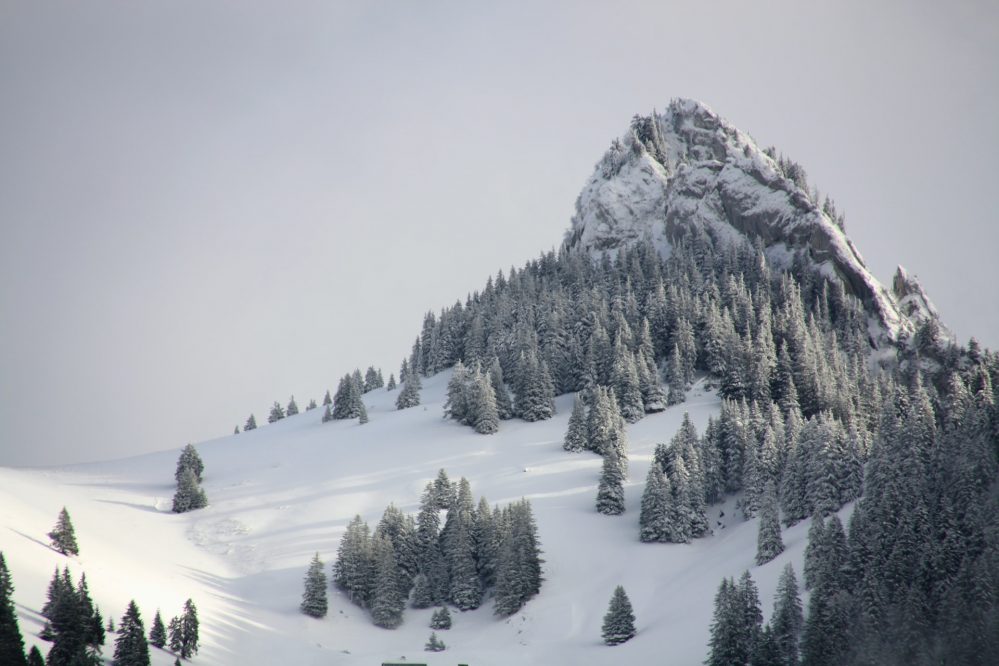 Switzerland does not have a national tree. However, an honorable mention goes to the pine tree. Pinus cembra, or the Swiss tree, is a pine tree species that grows in the Alps of Switzerland, among other places. This tree can endure many ranges of temperature, and that is why you can find it in various landscapes throughout Switzerland.
Switzerland does not have a national tree. However, an honorable mention goes to the pine tree. Pinus cembra, or the Swiss tree, is a pine tree species that grows in the Alps of Switzerland, among other places. This tree can endure many ranges of temperature, and that is why you can find it in various landscapes throughout Switzerland.
National Animal
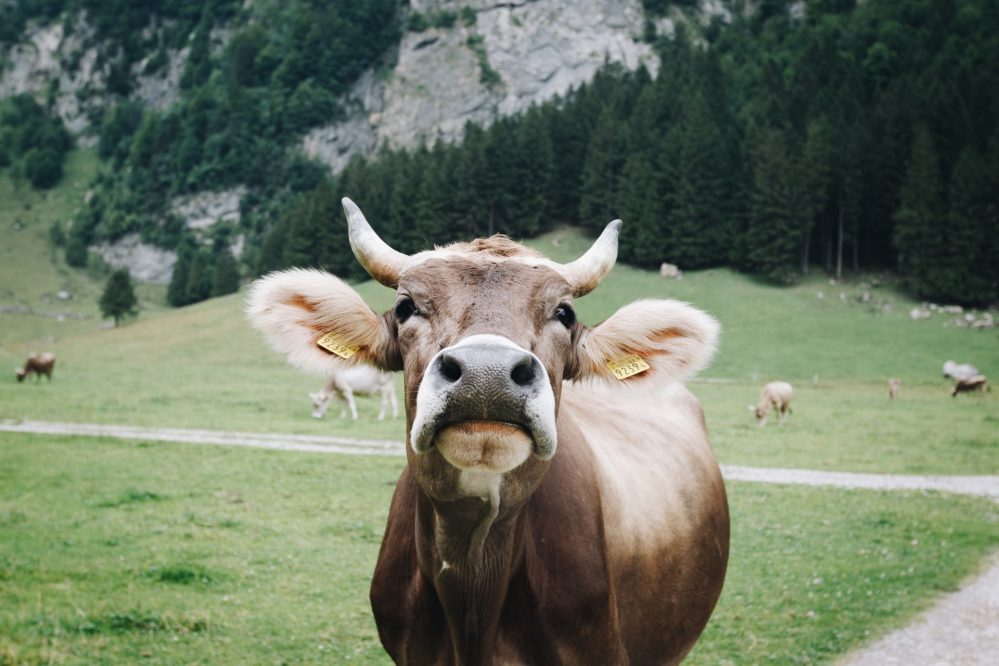 Switzerland does not have an official national animal. However, two species that are a few often associated with this country are:
Switzerland does not have an official national animal. However, two species that are a few often associated with this country are:
- Cows: They represent a big part of the Swiss landscape. From valleys to mountains, you can see them everywhere. They are also greatly appreciated for providing the essential ingredient for two things the Swiss people love: chocolate and cheese. Every autumn, the Swiss people express their praise by organizing a cow parade. As per tradition, around 350.000 cows come down the mountains around the alps, adorned with fancy bells and floral crowns.
- St. Bernard dogs: They are an official Swiss breed. They were first used to protect residents of the Great St. Bernard Hospice. But, soon, they started to display exceptional abilities to find people buried under the snow and help lost travelers find their way. According to their official motto, they symbolize sacrifice, devotion, and dignity.
- Turaco- This is the national bird of Switzerland. Turaco is a limited bird species, usually found in either Switzerland or southern Africa. It is easily distinguished by its primary feather pigments: purple, green, and blue. In some exceptional cases, you can also notice the presence of the red pigment. Almost all turaco birds are small to medium-sized, except for the blue turaco that is larger than most.
National Instrument
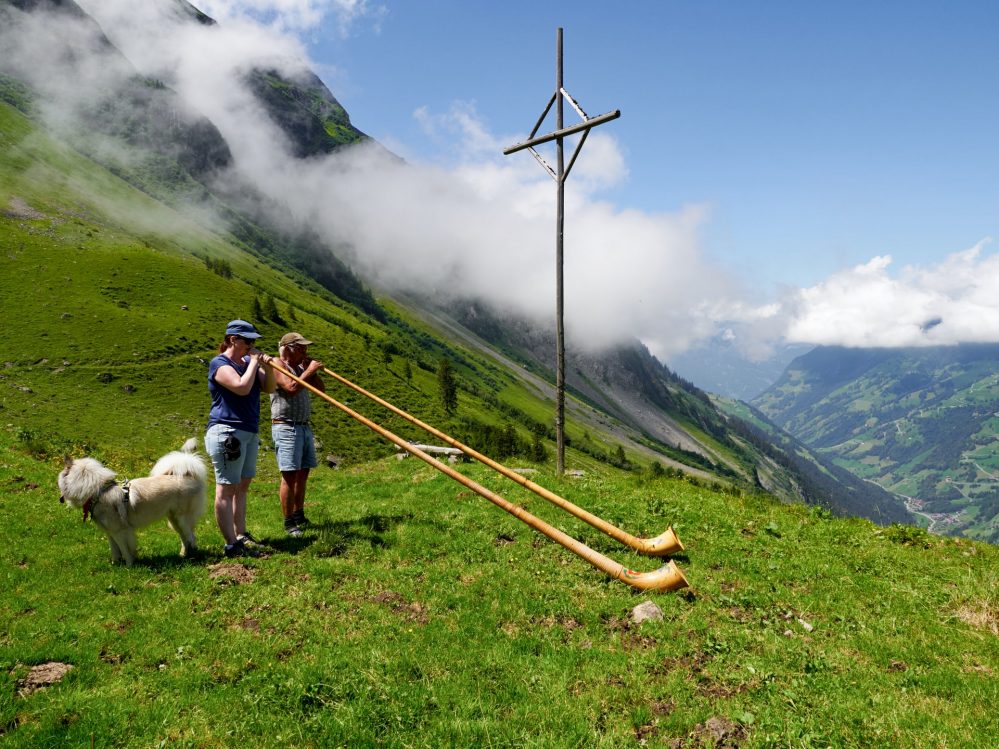 The Alphorn, a 3.5 meters long musical instrument, is one of the national symbols of Switzerland. It has a conical shape, bent like a cow’s horn at the end. One of its first mentions dates back to the mid-16th century, but when and where it was first built are still unknown. We do know, however, that this instrument has been used for over 600 years. Shepherds use it to call their cows into the stables, as well as for entertainment.
The Alphorn, a 3.5 meters long musical instrument, is one of the national symbols of Switzerland. It has a conical shape, bent like a cow’s horn at the end. One of its first mentions dates back to the mid-16th century, but when and where it was first built are still unknown. We do know, however, that this instrument has been used for over 600 years. Shepherds use it to call their cows into the stables, as well as for entertainment.
National Dish
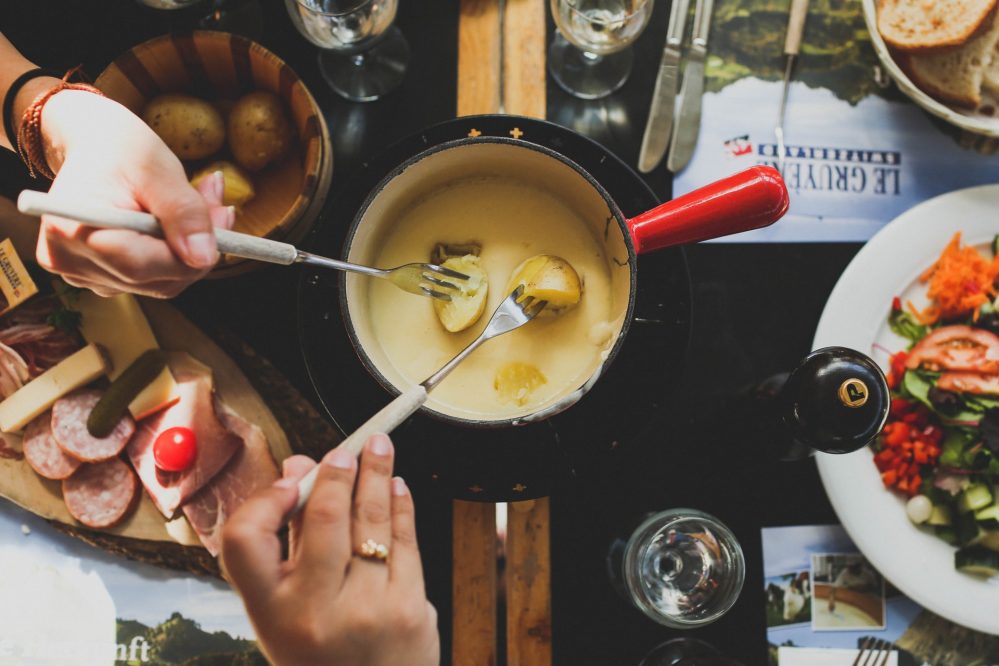 You don’t really know a country until you have tried their food. Besides the delicious chocolate and cheese, the Swiss are also known for several traditional dishes such as fondue and rösti.
You don’t really know a country until you have tried their food. Besides the delicious chocolate and cheese, the Swiss are also known for several traditional dishes such as fondue and rösti.
The fondue consists of various melted cheeses served in a caquelon or other ceramic pot. To keep the cheese melted, a small burner is placed underneath the caquelon. Depending on your preference, you can dip bread, meat, or vegetables into it and enjoy the flavourful experience.
For the ultimate breakfast delight, you must try rösti. Crispy on the outside but gooey on the inside, this potato-based patty is often combined with bacon, beef, pork, salmon, onion, cheese, and almost anything else you can think of.
There is so much more to know about Switzerland than these symbols, but this is a good start. Next time you see a cow or dip something in fondue, think of how these things help this country stand out. There is no better way to express your national pride or admiration for a country than displaying its national symbols. So, sing the Swiss Psalm, dance to the alphorn sound, and show the world the beauty and culture Switzerland offers.

